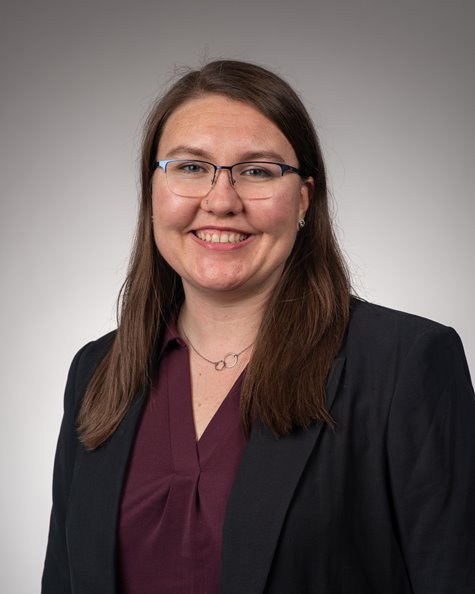About
Dr. Mirinda Ann Gormley hails from the Amana Colonies in rural Iowa. She received her undergraduate education at Iowa State University, served as a Peace Corps Volunteer in Tanzania, and went on to receive a Masters of Science in Public Health (MSPH) from the Tulane School of Public Health and Tropical Medicine and a PhD in Epidemiology from Virginia Commonwealth University. She has volunteered or worked as an emergency medical services (EMS) professional off and on for the past ten years and served three years as an Associated Schools and Programs of Public Health Fellow in the National Highway Traffic Safety Administration’s Office of EMS. Her research interests include occupational injuries/exposures among EMS personnel, investigating the long-term outcomes of moderate-to-severe traumatic brain injuries, and identifying and addressing barriers to accessing addiction treatment among individuals who misuse substances. Dr. Gormley recently worked for Clemson University as an embedded postdoctoral scholar at the Prisma Health Addiction Research Center. She collaborated with Clemson and Prisma colleagues on many projects, including investigations of the PREVAIL population, SC-STRONG analyses examining differences in vaccination attitudes among healthcare workers and EMS personnel, implementation of the HIV PrEP care continuum among those receiving medication for opioid use disorder, and a systematic review examining the effectiveness of peer recovery support services for individuals with opioid use disorder. Dr. Gormley is excited to continue collaborating with her Clemson colleagues as she works as a biostastician in the Prisma Health Department of Emergency Medicine in Greenville, SC.
How their research is transforming health care
Emergency medical services (EMS) professionals use naloxone, the opioid-antidote, to revive overdose victims, but are often unable to link overdose survivors to the treatment they desperately need. This is why much of Gormley's doctoral work focused on investigating the barriers that impede individuals from accessing treatment for substance use disorders and exploring novel interventions initiated by EMS personnel which link overdose survivors to treatment for their substance use disorders. EMS professionals are an underutilized resource with great potential to be incorporated into many public health interventions, serving as guides to lead individuals in need to the treatment they require. Many communities have initiated models of care which utilize community paramedics, who expand their scope of practice to address public health problems within a community. Whereas many current models utilize community paramedics to address frequent utilizers of the healthcare system, or follow-up on chronic conditions to deter hospital readmissions, there are still many innovative applications of the community paramedicine model yet to be explored. Evaluating novel ways to increase healthcare access to underserved and vulnerable populations is ever more important as there are increased calls for the screening of social determinants of health within our patient populations. As healthcare systems aim to better identify individuals requiring assistance to access treatment, they should also develop and implement innovative models to deliver these critically needed services. This is why my research explores novel interventions which link underserved and populations at high risk of fatality to necessary care. VCU News - A drive to be out in the field: How Mirinida Gormley connects research with emergency medicine.
Health research keywords
Emergency Medical Services (EMS); community paramedicine; Mobile Integrated Healthcare (MIH) epidemiology; systematic reviews; scoping reviews; meta-analyses; evidence-based medicine; mental health; health services evaluation; public health; Traumatic Brain Injury (TBI); employment outcomes; rehabilitation; Substance Use Disorders (SUD); Opioid Use Disorder (OUD); Polysubstance Use (PSU); People who Inject Drugs (PWID); Opioid Agonist Treatment (OAT); occupational injuries; violence in the workplace; occupational exposures; access to healthcare; social determinants of health; rural healthcare; barriers to accessing healthcare; Hepatitis C Virus (HCV); health-related quality of life; Human Immunodeficiency Virus (HIV); HIV pre-exposure prophylaxis (PrEP)

